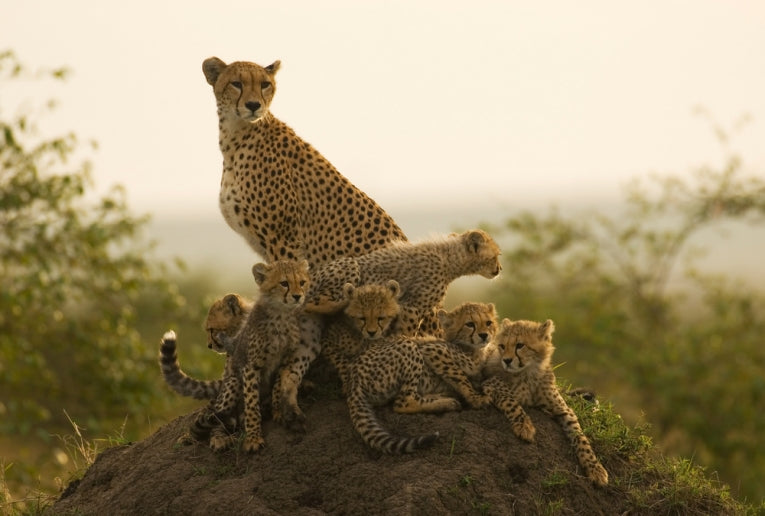Cheetahs are among the most threatened mammals alive, with a genetic load to carry as well as the usual threats from habitat loss and human encroachment. It has always been thought that the enormous energy expended during a cheetah chase would cause the animal, Acinonyx jubatus, to overheat, just like a Jaguar car!
The cheetah often abandons a chase and this was the reason thought to explain it. Robyn S. Hetem and her colleagues at the Universities of the Witwatersrand and Western Australia have used bio-sensors in central Namibia to prove that the metabolism doesn’t operate so inefficiently and in fact, the body warms twice as much during a successful hunt. Robyn S Hetem quotes the use of, “ implanted temperature-sensitive and movement-sensitive data loggers under sterile surgical conditions.”
The stalking and chasing is all about the cheetah’s low success rate of 40%. The hunt consists of up to 500m of speeds reaching 100km/hour in the 4 free cheetahs tested. They normally abandon hunts frequently and then rest up, inactive for a long period. They even rest after a successful hunt, despite the fact their catch may be stolen by other animals.
The cheetah body temperature has a mean of 38.3 degrees Celsius during this set of experiments, varying from 37.3 to a dangerous 39.5 degrees. The danger lies, as with humans, in exceeding the 40.5 degree limit, but that did not happen during a hunt, with mean temperatures attending both successful and unsuccessful chases. A 24 hour rhythm of body temperature determines that temperature that will prevail over the hunt sequence. The only consequence was a steady rise for 40 minutes afterwards.
This rise varied from 0.5 to 1.3 degrees for unsuccessful and successful hunts respectively. This thermal difference is accounted for by stress hyperthermia, according to the authors. Sympathetic nervous system activity is similar to fear or fight responses and occurred in two hunters in one observation, one of whom was lame. This meant that only one of the pair had undergone the full drama of the kill, but both suffered similar rises in temperature! Nervousness and alertness are key features at a cheetah kill, as leopards and lions often hijack the prey and a leopard killed two cheetah during the study.
Why the abandonment of the chase? We have yet to see why that takes place. Biology Letters of the Royal Society published the data today under the title, "Cheetah do not abandon hunts because they overheat"










